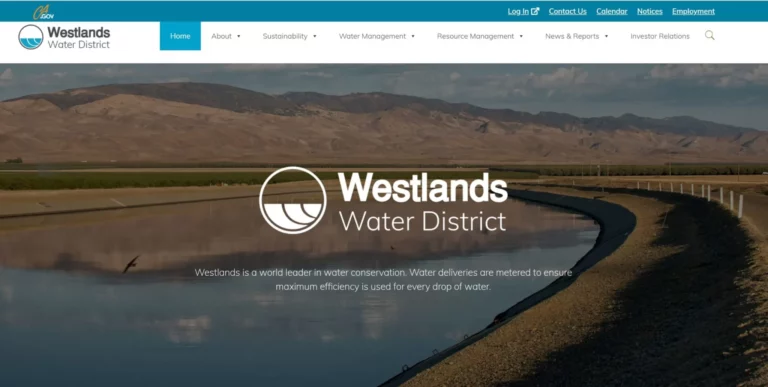Westlands’ Efforts to Permanently Privatize California Water Opposed by Unique Coalition & Rejected by Skeptical Judges
Credit: Bet Hannon Business
While there’s a great deal that’s dysfunctional and downright wrong about water law and policy in California, occasionally there are positive developments to report. So it’s most satisfying to end 2023 with some good news regarding water in the Golden State.
This is the saga of how the Westlands Water District tried to privatize a permanent supply of massive amounts of California water from a government-operated water project; the remarkable coalition of interests that joined together to foil Westlands’ efforts; and the California trial and appellate courts that soundly rejected Westlands’ Grinch-like plan.
Westlands is a quasi-local government agency formed in 1952, and the largest agricultural water district in the United States. It provides water to irrigate over 600,000 acres of farmland in California’s San Joaquin Valley–a district roughly as large as the state of Rhode Island. Westlands also has a well-deserved reputation as one of the most powerful, arrogant and litigious water actors in California–the “neighborhood bully” of the state’s water community. (If you’re interested in the rather sordid details, I recommend the iconic book, Cadillac Desert by the late Marc Reisner and the more recent and equally insightful work, The Dreamt Land by Mark Arax.)
Westlands doesn’t itself hold substantial surface water rights, but instead primarily obtains its water via contracts with the U.S. Bureau of Reclamation, operator of the Central Valley Project (CVP) and California’s State Water Project. The Bureau’s CVP water delivery contract with Westlands was originally 40 years in length. Since that contract expired in 2007, the Bureau and Westlands have entered into numerous successive “interim renewal” contracts.
Beginning in the early 20th century, Congress attempted to limit deliveries of heavily-subsidized federal water to “family” farms no larger than 160 acres. But over the years, Westlands and other water districts across the American West stretched, circumvented or simply ignored those acreage limits in order to obtain CVP water sufficient to irrigate their much larger industrial farming operations. (Congress also envisioned that water districts and users–including Westlands–would eventually reimburse federal taxpayers for the enormous costs of building and operating the CVP and other massive federal water storage and delivery systems in the West. But that financial obligation has never been satisfied either.)
In 1982 Congress bowed to the wishes of Westlands and other water contractors by raising the acreage limitation for CVP water deliveries from 160 to 960 acres. And in 2016 legislation, Congress created a five-year window for Westlands and other water contractors to convert their water delivery contracts to more favorable terms, conditioned upon: 1) those contractors’ agreement to […]
Full article: sierranevada.ca.gov […]
Full article: legal-planet.org

